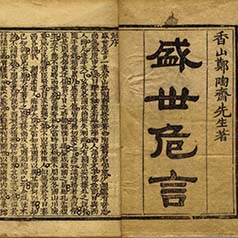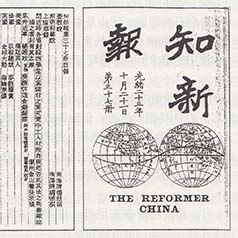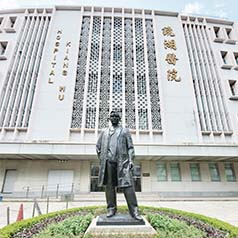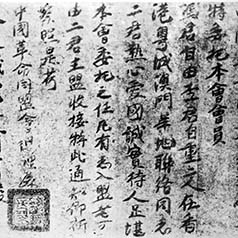
The Self-Strengthening Movement, Hundred Days’ Reform, and Revolution (1842-1912)
The Self-Strengthening Movement, Hundred Days’ Reform, and Revolution: an Overview
China was invaded by European colonists after the First Opium War. In this critical moment, Macao (Macau) became a place where the Western Affairs Camp, Reformer Camp, and Revolutionary Camp converged on a national salvation quest.
The Self-Strengthening Movement, Hundred Days’ Reform, and Revolution: an Overview
China was invaded by European colonists after the First Opium War. In this critical moment, Macao (Macau) became a place where the Western Affairs Camp, Reformer Camp, and Revolutionary Camp converged on a national salvation quest.
(1) The Cradle of the Self-Strengthening Movement’s Pioneers
Some significant advocates of the Self-strengthening Movement had deep connection with Macao, a long-established meeting place of the East and West.
(2) The Base of the Reformer Camp
The Reformer Camp headed by Kang Youwei and Liang Qichao issued newspapers and set up schools to disseminate its thoughts in Macao (Macau). After the failure of the Hundred Days’ Reform, the camp still chose Macao as its base to set up the Chinese Empire Reform Association and planned an armed uprising to help Emperor Guangxu return to power.
(3) Sun Yat-sen and Macao
In addition to its close connection with the Western Affairs Camp and the Reformer Camp, Macao (Macau) was also one of the starting points of China’s modern revolution. Sun Yat-sen regarded the time when he worked as a doctor in Macao and Guangzhou as “the beginning of the revolutionary movement”.
(4) The Revolutionary Trend in Macao
The revolutionaries commenced the revolutionary work in Macao (Macau) and the Guangdong area by setting up the Macao branch of the United League in 1905. Its efforts in promoting education and revolution, and planning the Xiangshan Uprising contributed to China’s modern revolutionary course.







